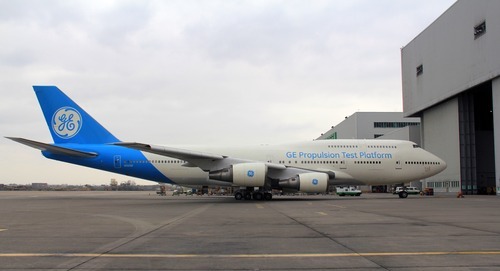The oldest Boeing 747 in active service could have completed its last flight. Operated by GE Aviation as an engine flight test bed, th...
The oldest Boeing 747 in active service could have completed its last flight. Operated by GE Aviation as an engine flight test bed, the Boeing 747 most likely flew her final flight on January 25 from GE Aviation’s Flight Test Operation in Victorville, California.
Rolled out from Boeing's Everett assembly line on October 17, 1969, the 747-100 made its first commercial flight with Pan American World Airlines on March 3, 1970.
Named the Clipper Ocean Spray, Pan Am flew the aircraft for 21 years, accumulating more than 86,000 flight hours and 18,000 cycles before GE acquired the aircraft in 1992.
After undergoing modifications like removing seats, strengthening the left wing and tail for flight testing and installing data systems, the Flying Test Bed began operations with GE in 1993 at its Flight Test Operation facility, which was then located in Mojave, California.
With GE, the historic 747 aircraft completed more than 3,600 flight hours and 775 cycles before its final January flight.
The aircraft provided critical flight data on more than 11 distinct engine models and 39 engine builds, including widebody engines likes the GE90, GEnx and the Engine Alliance GP7200, CF34 engines for regional jets, narrow body engines like CFM56 and LEAP, and the Passport for business aviation.
Gary Possert, retired Chief Test Pilot at GE Aviation, was part of the original B747-100 Flying Test Bed flight crew and flew on 705 flights, “The 747 is one of the best airplanes made in the history of mankind in my opinion. Very stable, easy to fly and extremely reliable. I will definitely miss the 747-100 Flying Test Bed.”
While the aircraft heads to storage, GE Aviation has acquired a B747-400 aircraft from Japan Airlines in late 2010 and turned it into its new Propulsion Test Platform (PTP).
Powered by GE’s CF6-80C2 engines, the new PTP offers better capabilities and improved integrated systems compared to the older flying test bed.











